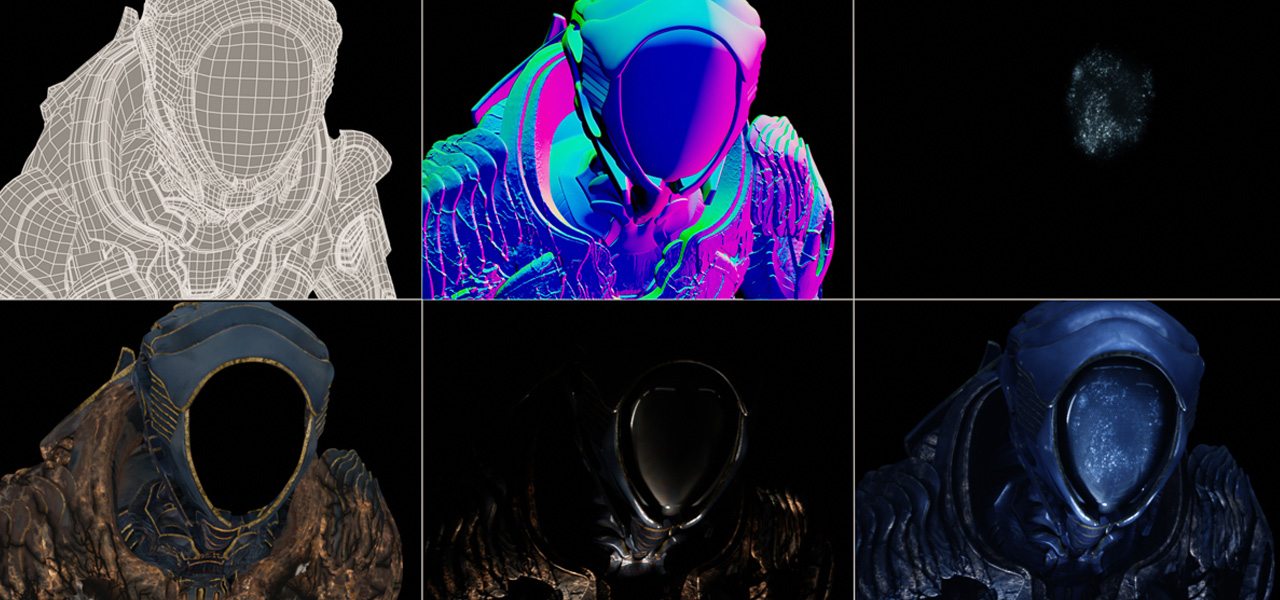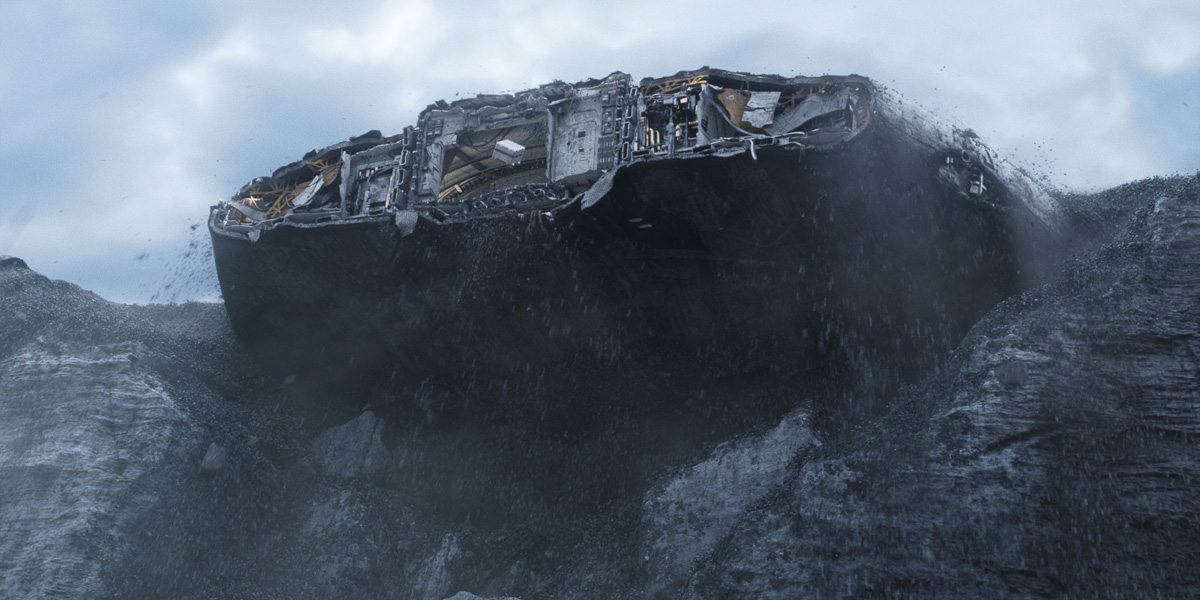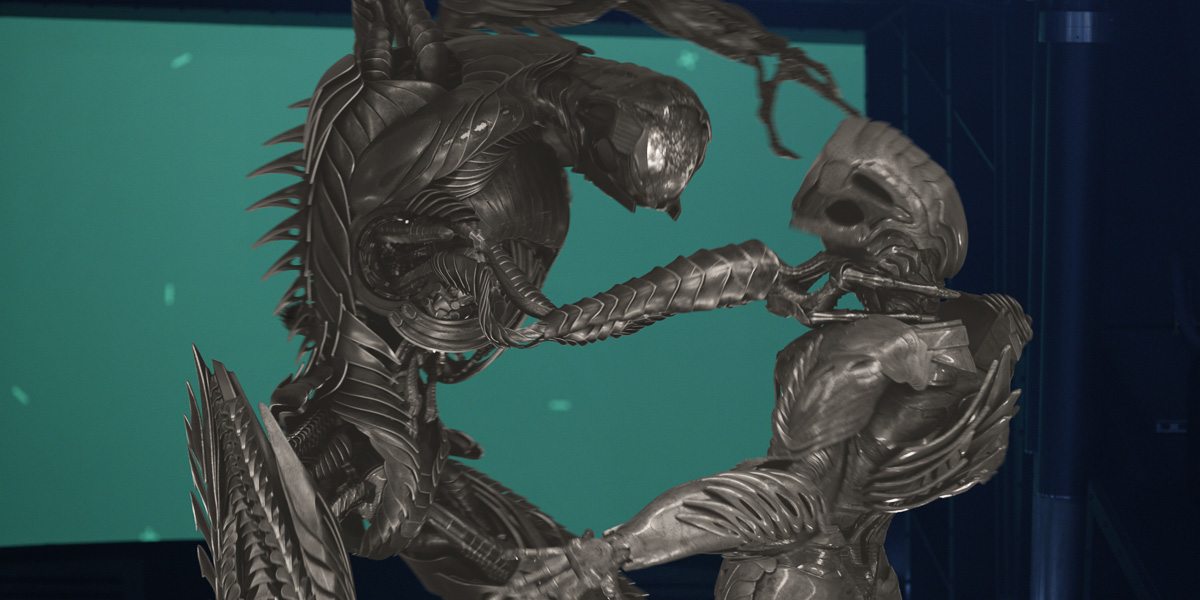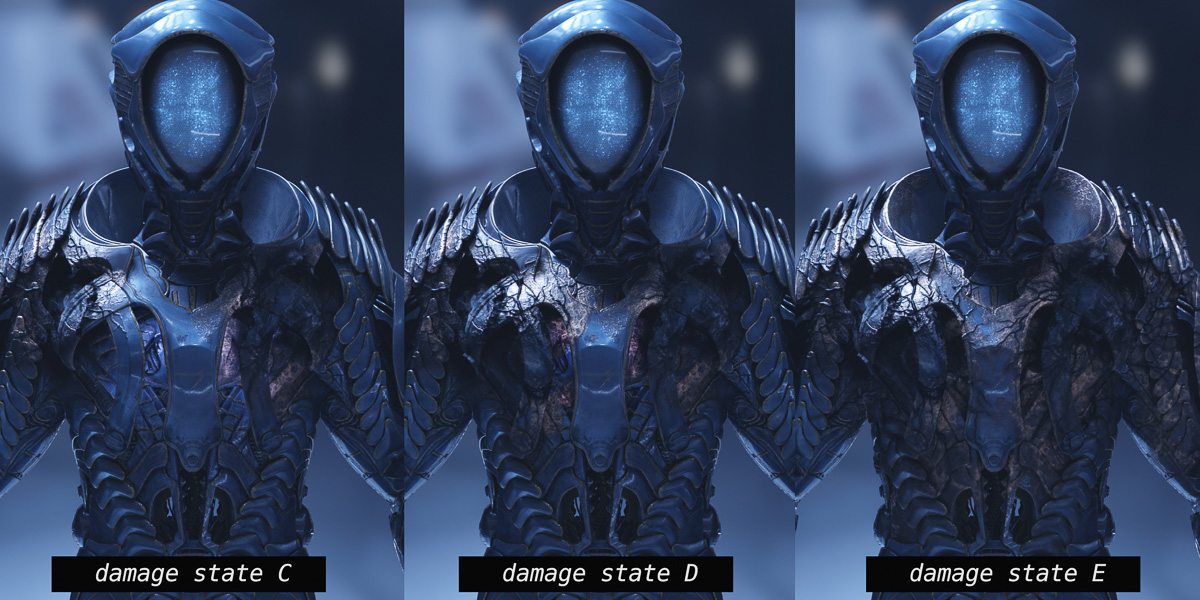

What’s It Like To Work As A VFX Vendor On A Big Show Like Netflix’s ‘Lost In Space’?
Big television shows require an army of artists to get made. This includes on the visual effects side, with series like Game of Thrones or Stranger Things made possible with multiple vfx vendors and hundreds of vfx crew.
But what is it like to be one of those vendors on a tv show? Cartoon Brew sat down with several members of the Lost in Space vfx crew from Image Engine. This new Lost in Space from Netflix is based on the original 1960s show and follows the Robinson family when they crash land in their Jupiter 2 craft on a habitable planet after leaving Earth.
Image Engine were brought onto the show by overall visual effects supervisor Jabbar Raisani and visual effects producer Terron Pratt to deliver a number of sequences that showcase robots, alien environments, and the crash landing site. Here’s a perspective on how a vfx vendor works with the main production on a tv show, what storytelling moments they are able to contribute, and how they exercise their vfx skills to deliver for a streaming series.
Netflix got in touch with Image Engine in September 2016. Although the studio would eventually work on shots such as a high-action robot versus robot fight, the very first task given to Image Engine was much more delicate. “It was a concept for a little alien butterfly that was, in the end, featured in only five shots,” said Image Engine visual effects supervisor Joao Sita. “It was not a big asset for the show, but it did create a connection. We had time to do the concept and they were very excited to see that we were excited about the show.”


Image Engine subsequently bid on a number of sequences in the show, and was first awarded scenes of Will Robinson (Maxwell Jenkins) meeting a trapped robot in a forest in the first episode. They’d later be awarded more work for the series and ramped up to a crew of around 70. “The shoot started in January 2017 and then ran from about 56 weeks in total from concepts to final delivery,” said Image Engine visual effects producer Cara Davies. “We worked on the forest, the cg robot (built by Rhythm & Hues), digital environments which were on fire, the crash site for Jupiter 2, and the finale of the alien robots fighting on the spaceship.”
In Image Engine’s favor was being relatively close to the shooting stages in Vancouver and other location shoots in British Columbia. Members of the studio got to be on set for particular scenes Image Engine would be providing visual effects for. This included the Will-meeting-the-robot sequence, which shot in a particularly cold location in winter.


“It was the coldest I’ve ever been,” said Image Engine environment supervisor Damien Thaller. “But they had a little kid up a tree filming him at 1am, and a stunt double for the robot, who only had a thin lycra mocap suit. My arms are hurting, thinking I’m going to come down with something the next day, but they were perfectly fine.”
But despite the cold, getting a chance to be on set was important – it’s not something that is always possible on these large shows. It also meant that later, when some of the original set-pieces for the forest meeting scenes needed to be re-visited, Image Engine could quickly make that happen. This involved modeling a new cg branch asset on which the robot has become impaled.


“They originally shot a hero tree that they had built,” said Image Engine assets supervisor Barry Poon. “As we put the robot in there it looked like there was no motivation to the robot being stuck. So they came back to us and asked us to do something, which we could do.”
Image Engine also had to be clever about how it worked on Lost in Space. Television shows do not typically have the level of budget or time available on feature films, but there remained some big scenes, such as a later forest fire that the robot and Will must escape from. Here, effects simulations for the fire were based on real fire elements shot as reference, and occurred largely amongst digital vegetation. Both needed to be art-directable to deal with any notes from production.

“We made elements of the trees and vegetation like a construction set,” said fx supervisor Denys Shchukin. “We created a library of different fire and smokes going in different directions, and then we could alter it shot by shot by changing the point clouds. It’s then easier at render time to make changes like making the fire go faster or slower. We could adjust it quickly rather than having to do a re-sim.”
Having delivered some compelling robot animation – as well as other scenes of wider environments and the Jupiter 2 crash site – Image Engine was asked to work on a final episode fight sequence between the robot Will has found and a second alien robot. The sequence saw the studio again be able to input their own creative suggestions. “We did a mock-up of the fight and some previs, and asked them what kind of violence did they want to have,” said Sita. “We started like it was Fight Club, but obviously we couldn’t go that far. They had also done some previs on their end for more direction. And then we started digging into the shots.”


At this point in the show, Will’s robot, now in humanoid form, has turned bad and the Robinsons are trying to escape. But its connection with Will is reformed when this second alien robot attacks. An epic battle ensues that saw Image Engine animate two cg robots against one another. The studio followed a pre-determined story in the fight that involved researching the effect of molten steel from a ‘hot-hand’ robot weapon. Different damage states therefore also became important, something that typically adds time and expense to the vfx production, but that the studio thought was crucial to show the high impact of the fighting in as much detail as possible.
“Joao had to explain to the client how important this was, and how it doesn’t come for free,” said Poon, who worked on at least five damage states to the robots. “On some other shows, we’ve just done it in compositing. But for Lost in Space, we explained it to the client and they went for it – it makes a big difference to have proper geometry damage.”

In fact, this attention to detail was a hallmark of Image Engine’s – and all the other vendors’ – work on Lost in Space. It was also necessary, since the tv series was delivered in 4K (most films have traditionally only been 2K deliveries). “It’s super sharp, there’s no chromatic aberrations which can help meld things in there,” said Image Engine compositing supervisor Keegan Douglas. “There’s no blurring on the edges, it’s just a super sharp image.”
This also changed Image Engine’s pipeline approach to the visual effects themselves. Lighting, effects, and rendering artists would work in lower resolution first up to the point that animation was final. “Once animation was finaled then we’d kick in the full-on resolution,” said Sita, who had not previously overseen a show requiring such high final delivery quality. “The 4K image has a lot of crazy detail. When you work in 2K you get away with some softening tricks, but here we didn’t feel like we could get away with any of that leeway.”


